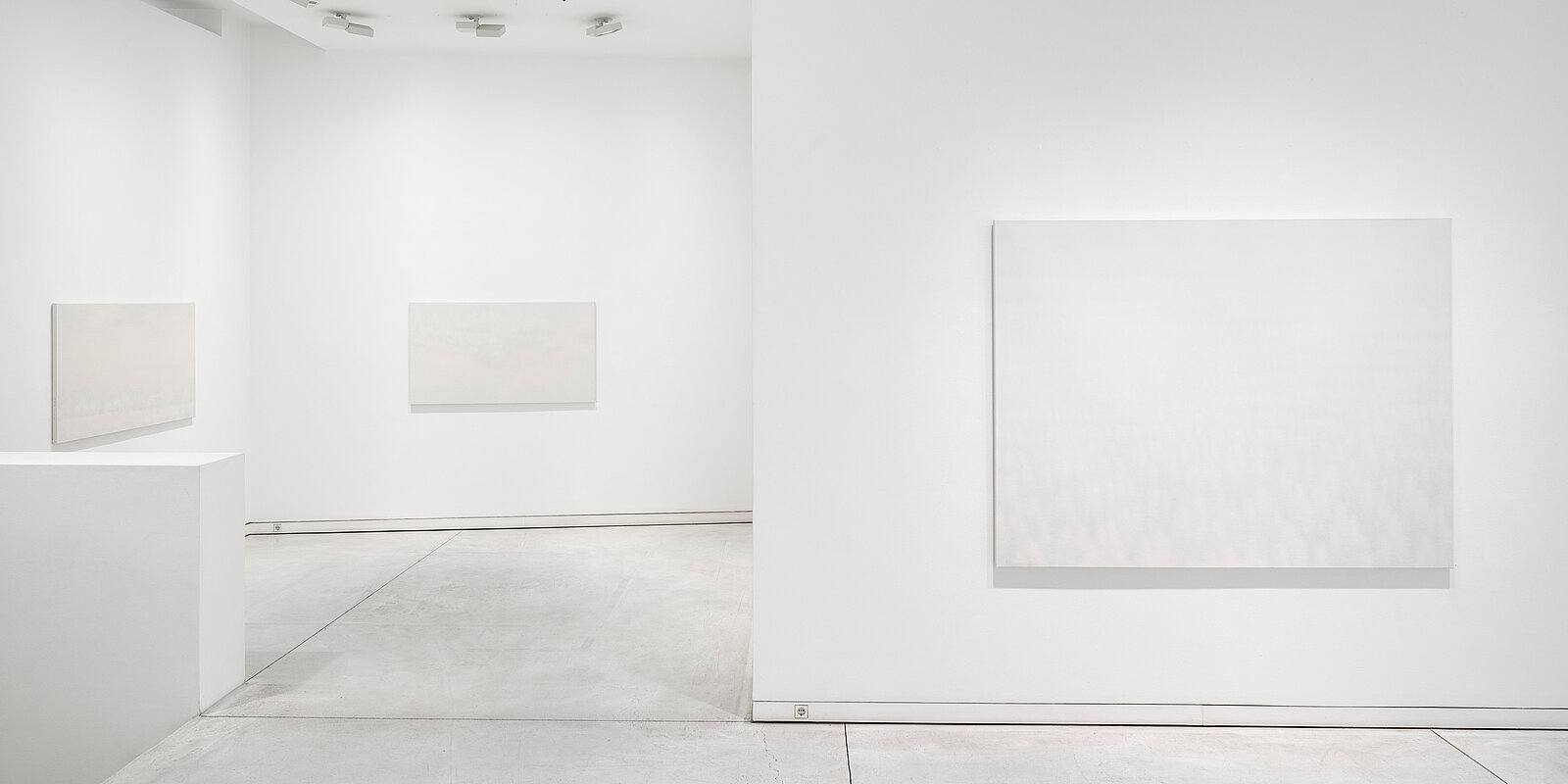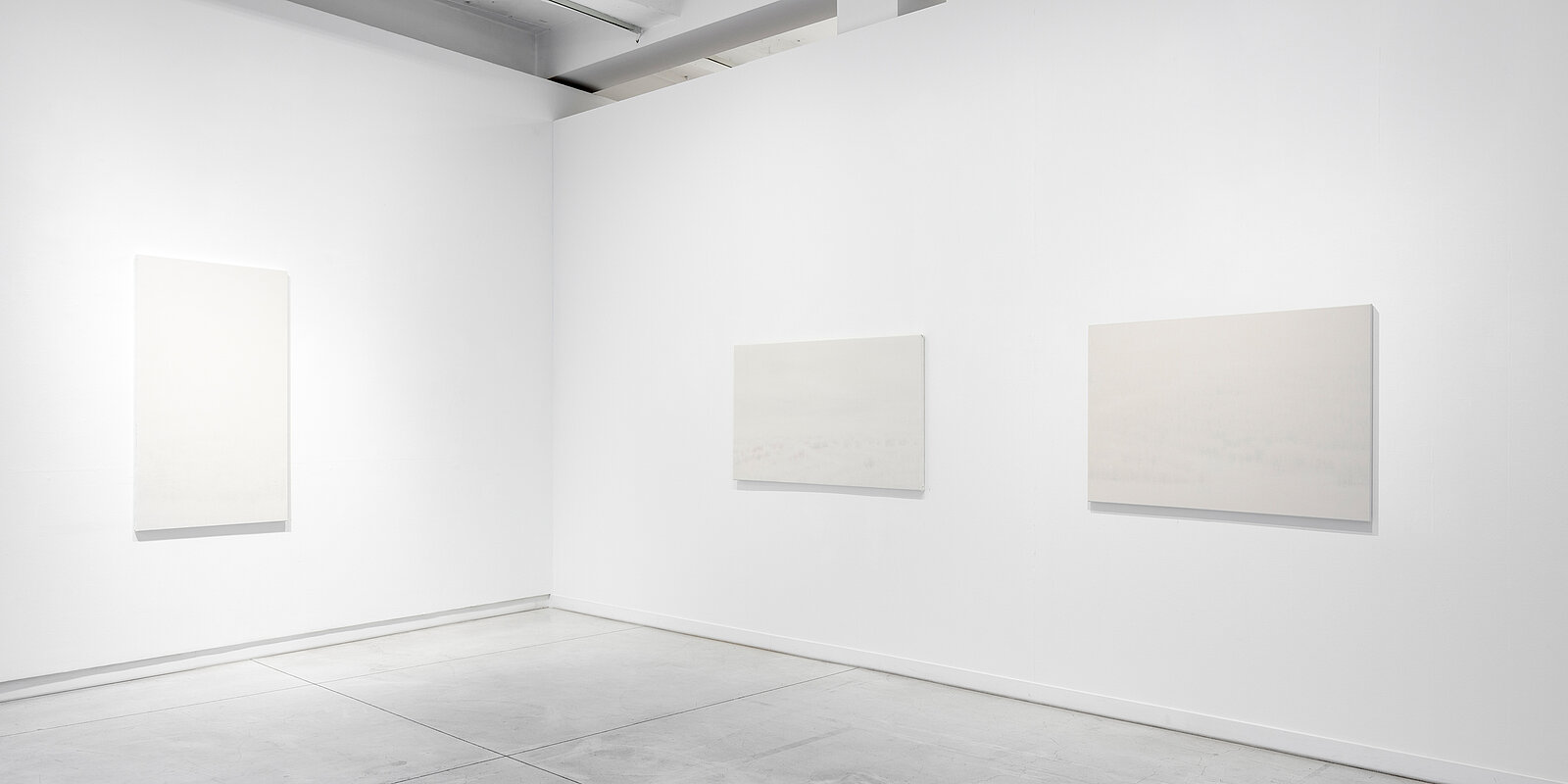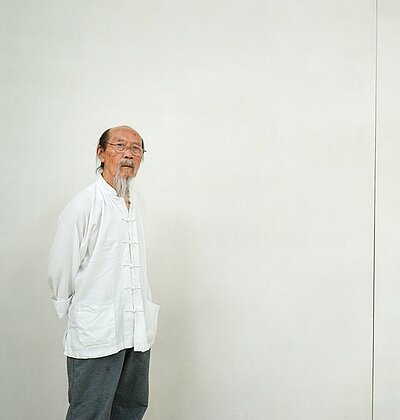Qiu Shihua: Visible... Invisible
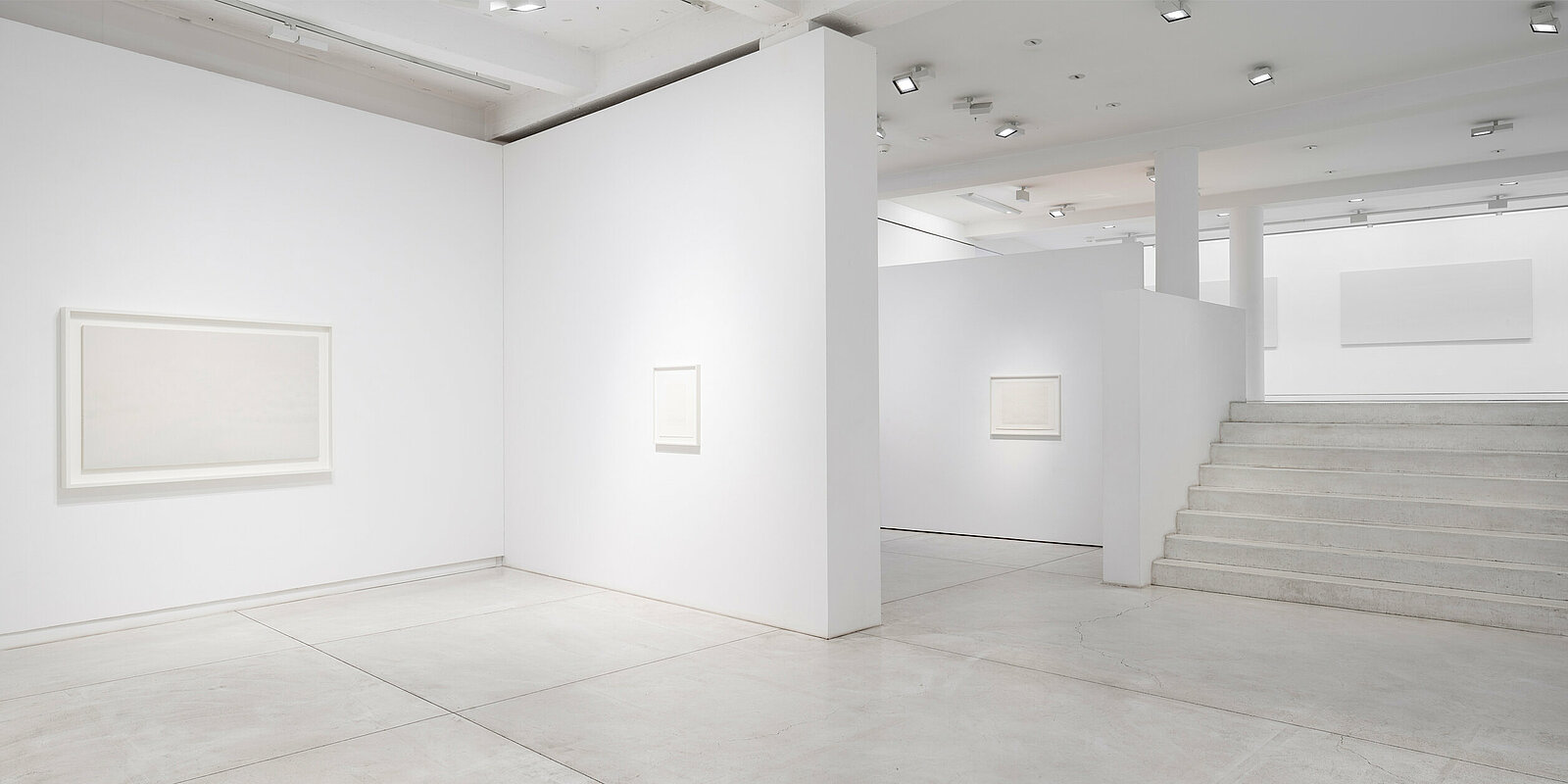
Galerie Karsten Greve Cologne
Tuesday - Friday 10 am - 6.30 pm
Saturday 10 am - 6 pm
Opening on Saturday, February 12, 2022, 11 am - 8 pm
"Forget everything. When there is nothing left, you can taste the plesure of emptiness [...] When everthing outside disappears, there is an expansion inside: when form retreats, the spirit reveals itself."
Galerie Karsten Greve is delighted to present QIU SHIHUA Visible… Invisible at the beginning of the new year, making it the third solo exhibition shown in Karsten Greve’s Cologne gallery space featuring works by Chinese contemporary artist Qiu Shihua. This is Qiu Shihua’s seventh one-man show with Galerie Karsten Greve, which has represented and presented the artist since 2015. Eleven oil paintings created between 2006 and 2019 will be on display, as will twelve works on paper dating from 2018 and 2019 to be premiered here.
At first glance, the works by Chinese artist Qiu Shihua seem to be monochrome paintings. However, out of nowhere, from the all-encompassing white-on-white that covers the natural hue of the raw canvas like a transparent, white veil, weak contrasts and vague contours emerge. In transparent glazes, Qiu Shihua makes landscape motifs appear and disappear. Shades condense into hills and valleys, groups of trees and forest silhouettes, mountain ridges and rocky precipices. The sun flickers as a luminous spot and a guide in impenetrable banks of fog. Slight color modulations on a whitish underlying tone break through the monochrome and, upon closer inspection, reveal themselves to be a superimposition of delicately colored layers of pale gray, blue, pink, and yellow. "In my pictures I try to give expression to visions beyond the visible. But I also try to depict things completely and at the same time vividly. When the beholder enters the (picture) space, he will feel how real they are, and he will notice how what he sees changes every now and then, sometimes growing larger, sometimes smaller, depending on his inner state," says Qiu Shihua about his paintings.
Atmospheric references to the traditions of Chinese landscape painting can be identified in Qiu Shihua’s paintings, such as the extreme reduction in color, hardly recognizable references to motifs, and the restriction to a few, sparingly used means and techniques. Chinese shan shui painting, for instance, is made up of the components shan (mountain) and shui (water) and, when these are brought together, illustrates the complementary unity of these two different natural conditions. In Qiu Shihua’s pieces, these characteristics are not just an artistic quotation, but also an expression of an aesthetic and ideological program that developed in the direction we can see today only in the course of the 1980s. Qiu Shihua’s quiet landscapes are reminiscent of the barren areas of the loess plateau in north-west China where the artist lived in seclusion for over twenty years. In his work, he sublimates many years of life experienced in the Gobi desert where he also turned to Taoism. The landscape visions vary between Taoist concepts of repetition and emptiness, on the one hand, and the Western idea of abstraction and reduction, on the other. The dissolution of the landscape into an increasingly painterly process brings to mind parallels to early abstract movements in Western European art, for example William Turner’s Venice paintings from around 1840, or the ephemeral nature of certain light settings in pastels by Claude Monet. Comparable to the Impressionist style of painting, in which the depiction of light and atmospheric conditions is the painter’s main task, where color is regarded as a consequence of light and atmosphere, and reproduced as a carrier of light, Qiu Shihua delays the emergence of landscape features and the process of image formation by creating a subtle interplay of light and shadow.
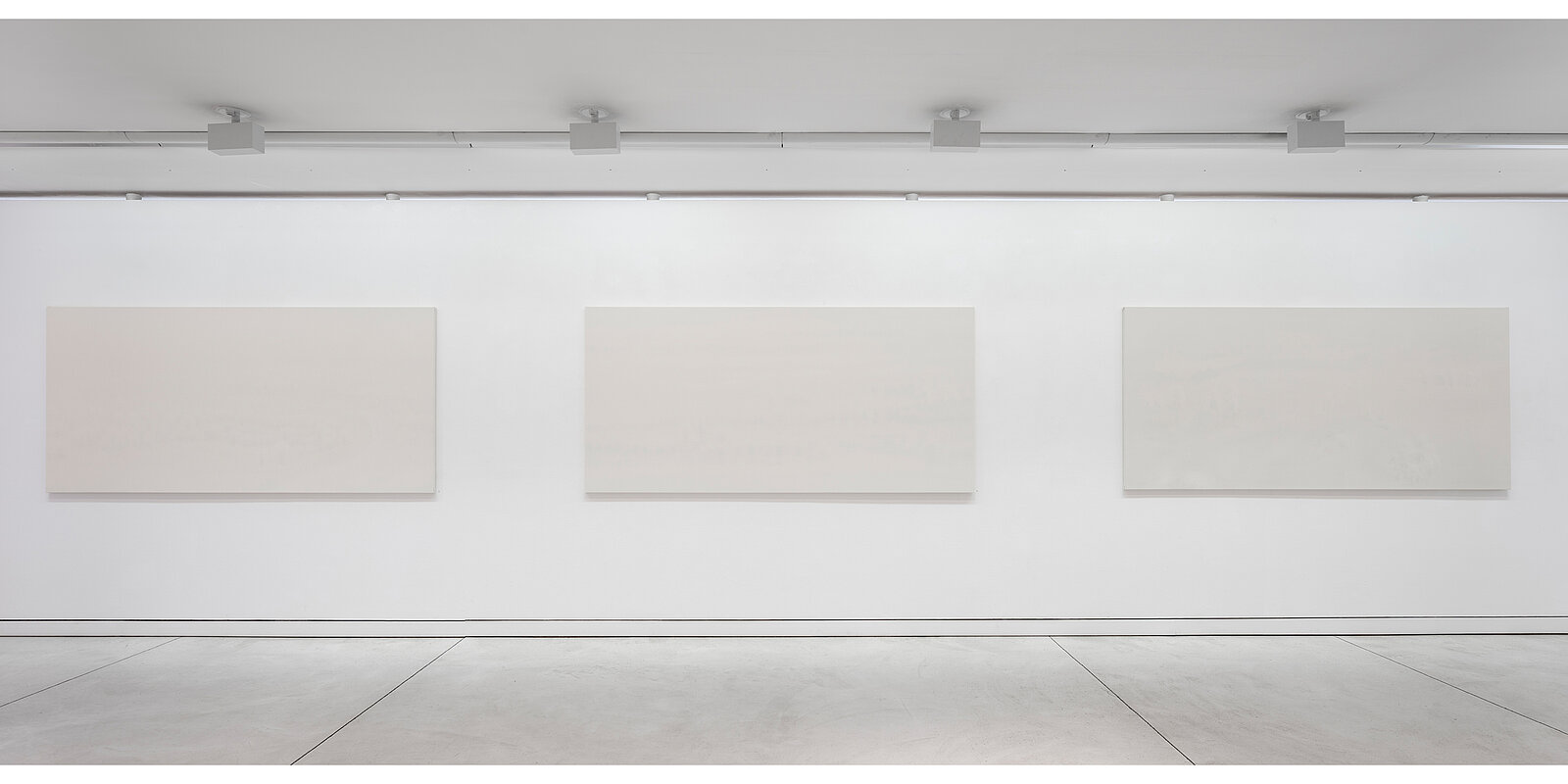
Born in Zizhong, Sichuan Province, China, in 1940, Qiu Shihua studied oil painting based on the painting style of Soviet socialist realism at Xi’an Academy of Fine Arts until 1962. After graduating, he worked for a cinema in Tongchuan, Shaanxi Province, during the time of the Cultural Revolution, painting film posters and advertising banners. Travels to Europe, a long stay in the Gobi desert, and his turn to Taoism resulted in a change in his artistic approach at the end of the 1980s. In the 1990s, Qiu Shihua had his first solo exhibitions in galleries in China and Taiwan. He took part in the Biennials in São Paulo (1996), Venice (1999), and Shanghai (2004). In 2001, The Kunsthalle New York staged Qiu Shihua's first one-man exhibition outside China. In 2012, the Berlin-based Hamburger Bahnhof – Museum für Gegenwart, and the Museum Pfalzgalerie, Kaiserslautern, dedicated comprehensive individual presentations to Qui Shihua. The touring exhibition Mahjong – Chinese Contemporary Art from the Sigg Collection, shown at the Kunstmuseum Bern (2005), Hamburger Kunsthalle (2006), and the Museum der Moderne Salzburg (2007), as well as Shanshui – Poetry without Sound? Landscape in Chinese Contemporary Art, a group exhibition presented at the Kunstmuseum Luzern (2011), deserve particular mention. Works by Shihua are part of international public collections including The Metropolitan Museum of Art, New York, The Royal Academy of Arts in London, and the Fondation Louis Vuitton, Paris. Qiu Shihua lives and works in Beijing and Shenzhen, China.
